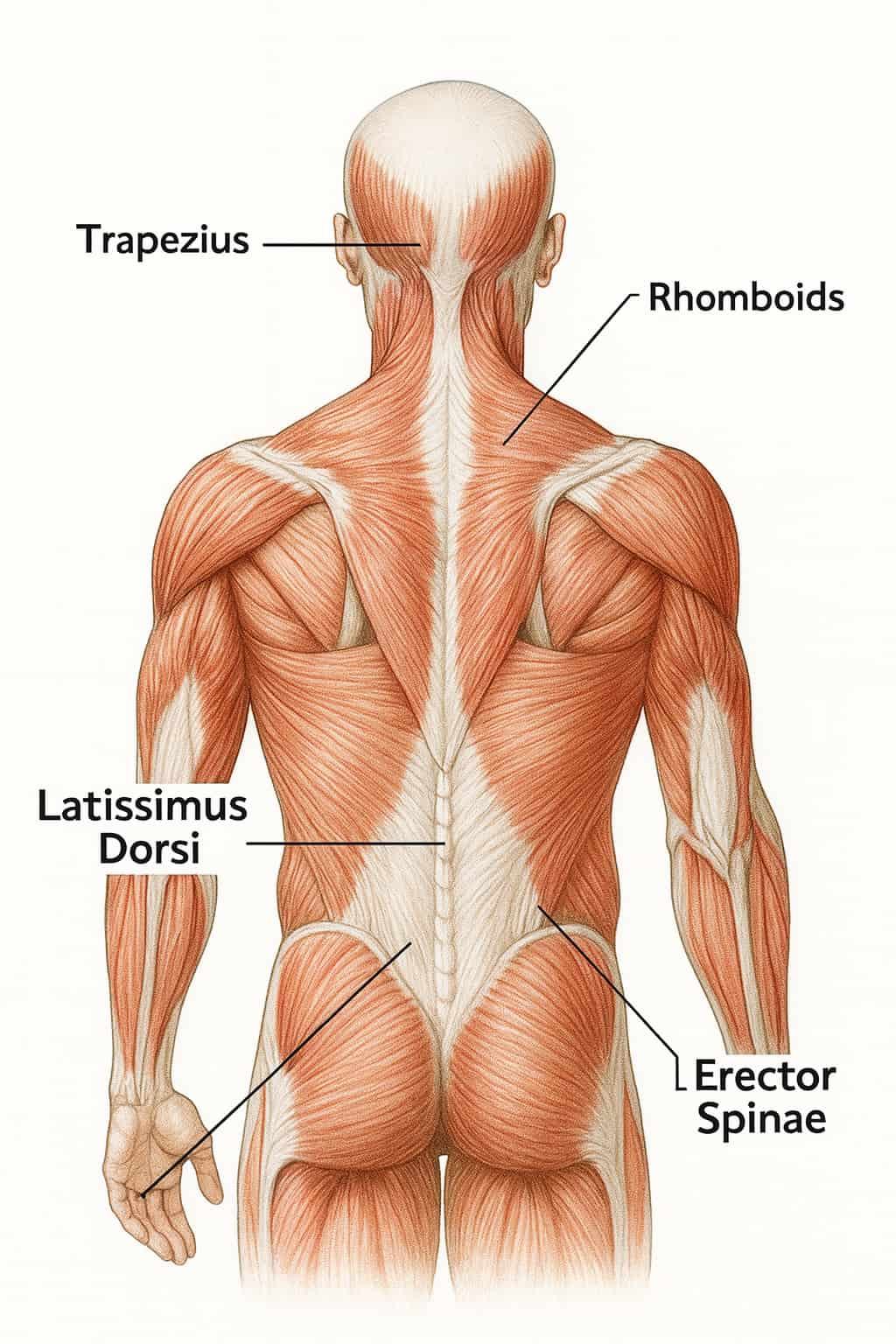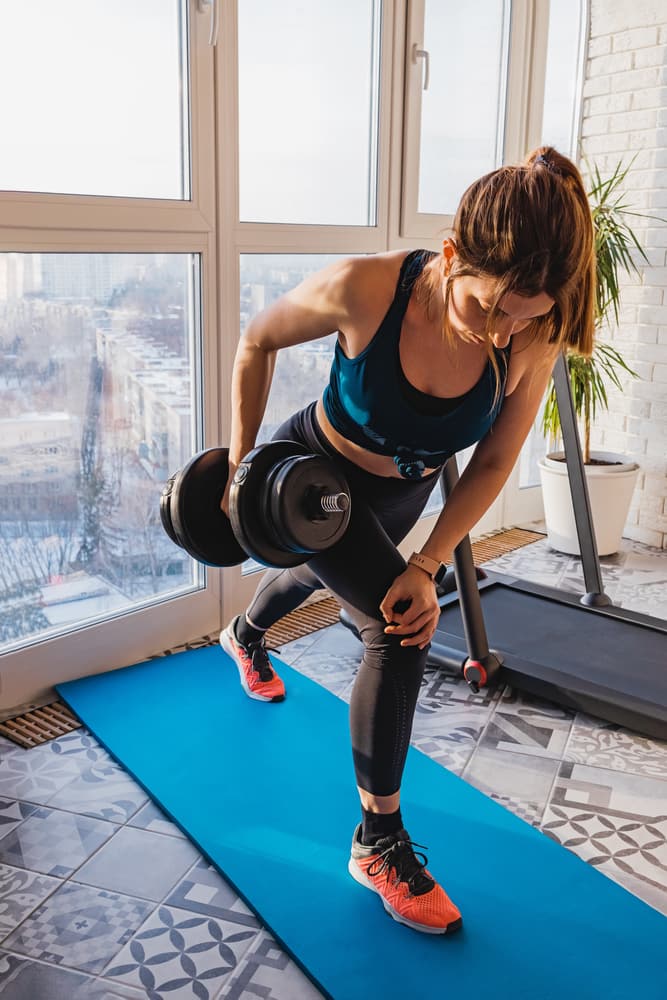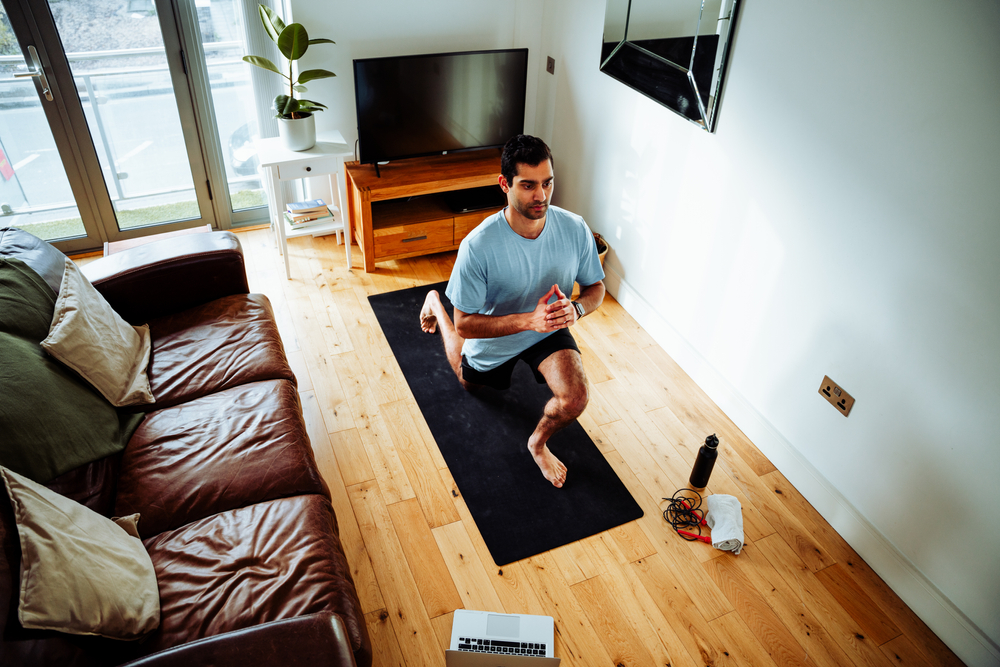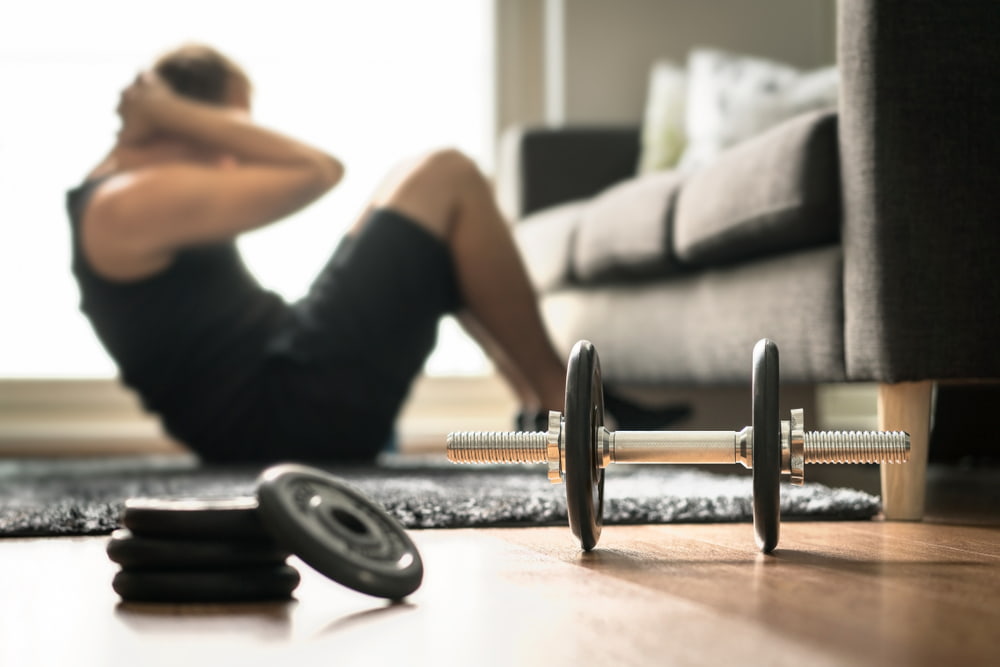Top 7 Dumbbell Back Exercises You Can Do at Home (No Gym Needed)


Why Back Training Matters
When it comes to home workouts, most people think of abs, arms, or chest exercises but the back often gets left behind. Yet your back is the foundation of your upper body strength, posture, and balance. A strong back not only improves the way you move but also how you feel and carry yourself every day.
The good news is that you don’t need an expensive gym membership or bulky machines to build it. With just a pair of dumbbells and a little space, you can train your back muscles effectively at home and start noticing real changes in your strength and posture.
Your back supports almost every movement your body makes whether you’re lifting groceries, sitting at a desk, or standing tall with confidence. A weak back can lead to poor posture, stiffness, and even chronic pain, while a strong one enhances core stability, protects your spine, and keeps your movements balanced and powerful.
If your goal is to look better, move better, and feel stronger, focusing on your back during your home workout routine isn’t optional it’s essential. Building strength from behind helps you stand taller, prevent injuries, and develop the kind of symmetry that gives your body a naturally confident appearance. Posture improvement starts with a strong back and you can begin that transformation right from your living room.


Anatomy Insight: The Key Back Muscles You Train
Before diving into the exercises, it’s important to understand which back muscles you’re actually working and how each one contributes to your movement, posture, and overall strength. When you perform a strength training at home routine with dumbbells, you’re not just targeting one area you’re engaging a coordinated network of muscles that make up your upper back and lower back.
The largest and most visible of these is the latissimus dorsi (lats), which gives your back that signature “V” shape. These muscles run along the sides of your torso and are responsible for pulling your arms down and back movements you’ll perform in exercises like dumbbell rows or pullovers. Strengthening your lats not only builds width but also improves your ability to lift and pull effectively in daily tasks.
Next are the trapezius muscles, located across the upper back and neck. The traps help stabilize your shoulder blades and support posture by keeping your shoulders aligned. When you shrug, retract, or squeeze your shoulder blades together, your traps are doing the work. Strong traps contribute to that upright, confident posture you notice in well-trained individuals.
Beneath the traps lie the rhomboids, smaller yet essential muscles that pull your shoulder blades inward. These are key players in posture correction especially for anyone who spends long hours sitting or leaning forward. Training your rhomboids enhances muscle activation during pulling exercises and keeps your shoulders from rounding forward.
We have the erector spinae, a group of muscles running along your spine from your lower back to your neck. They act as the body’s natural stabilizers, maintaining spinal alignment and helping you stand tall. Strengthening these muscles reduces back pain risk and improves core stability two critical benefits of consistent back training at home.
For a clearer understanding, you can visualize your back as a layered system: the upper back handles posture and shoulder movement, while the lower back supports stability and power. Together, they form the foundation for every strong and functional body.


The 7 Best Dumbbell Back Exercises You Can Do at Home
When training your back at home, all you need is a pair of dumbbells and a bit of space. The key is to focus on form, control, and consistency. Below are seven of the most effective dumbbell exercises that target every major muscle in your upper and lower back helping you build strength, improve posture, and enhance your overall physique.
1. Bent-Over Dumbbell Row
Muscles Worked: Latissimus dorsi, rhomboids, trapezius, rear deltoids
How to Do It:
Hold a dumbbell in each hand with your palms facing your body. Bend forward slightly at your hips while keeping your spine neutral and your knees soft. Pull both dumbbells toward your waist, keeping your elbows close to your body. Lower them back down under control.
Form Tips: Keep your back flat and avoid rounding your shoulders. Focus on pulling through your elbows rather than your hands to better activate your back muscles.
Reps & Sets: 3 sets of 10-12 reps for beginners; 4 sets of 8-10 reps for intermediate lifters.
2. Single-Arm Dumbbell Row
Muscles Worked: Lats, rhomboids, traps, biceps
How to Do It:
Place your left knee and left hand on a sturdy surface like a bench or chair. Hold a dumbbell in your right hand with your arm fully extended. Pull the dumbbell toward your hip while keeping your back straight, then lower it slowly. Switch sides after finishing the reps.
Form Tips: Keep your shoulder blades engaged throughout the motion. Avoid twisting your torso your body should remain stable as only the arm moves.
Reps & Sets: 3 sets of 12 reps per side for beginners; 4 sets of 10 reps for intermediate.
3. Reverse Fly
Muscles Worked: Rear deltoids, rhomboids, traps
How to Do It:
Hold a pair of light dumbbells and bend slightly at the hips with a flat back. With a soft bend in your elbows, raise the dumbbells outward to shoulder height until your arms form a “T” shape. Lower slowly.
Form Tips: Control the movement; don’t swing the weights. Keep your chest lifted and squeeze your shoulder blades at the top for maximum muscle activation.
Reps & Sets: 3 sets of 12-15 reps for beginners; 4 sets of 10-12 reps for intermediate.
4. Dumbbell Deadlift
Muscles Worked: Erector spinae, glutes, hamstrings, traps
How to Do It:
Stand with your feet shoulder-width apart, dumbbells in front of your thighs. Keeping your back neutral, hinge at your hips and lower the dumbbells down along your legs until you feel a stretch in your hamstrings. Push through your heels to return to standing.
Form Tips: Maintain a flat back at all times and keep the weights close to your body. Engage your core to protect your lower back.
Reps & Sets: 3 sets of 10 reps for beginners; 4 sets of 8-10 reps for intermediate
5. Dumbbell Shrugs
Muscles Worked: Upper traps
How to Do It:
Stand tall with a dumbbell in each hand at your sides. Lift your shoulders straight up toward your ears, pause briefly, then lower them slowly.
Form Tips: Avoid rolling your shoulders move them straight up and down. Focus on a strong contraction at the top of the movement.
Reps & Sets: 3 sets of 15-20 reps for beginners; 4 sets of 12-15 reps for intermediate.
6. Dumbbell Pullover
Muscles Worked: Lats, chest, triceps
How to Do It:
Lie on a flat surface (like a bench or floor) holding one dumbbell with both hands above your chest. With a slight bend in your elbows, slowly lower the dumbbell behind your head until you feel a stretch in your lats. Bring it back up using controlled motion.
Form Tips: Keep your lower back pressed into the floor or bench. Move slowly and avoid overextending your shoulders.
Reps & Sets: 3 sets of 10-12 reps for beginners; 4 sets of 8-10 reps for intermediate.
7. Renegade Row
Muscles Worked: Lats, traps, core, biceps
How to Do It:
Start in a plank position with a dumbbell in each hand. Row one dumbbell toward your hip while stabilizing your body with the other arm. Lower the weight and repeat on the opposite side.
Form Tips: Keep your core tight and avoid rotating your hips. The goal is stability and control, not speed.
Reps & Sets: 3 sets of 8-10 reps per side for beginners; 4 sets of 6-8 reps for intermediate.
Each of these movements can be performed in a small space and adjusted based on your strength level. When done consistently with proper form, they help develop a wider, stronger, and more balanced back improving not only how you look but also how you move and feel throughout your day.
Proper Form and Safety Guidelines
Maintaining correct form is the single most important factor in making your back workouts both safe and effective. When training at home, you don’t have the constant supervision of a trainer, so paying close attention to posture, movement control, and form correction becomes essential to prevent injuries and get maximum results from every rep.
Start by keeping a neutral spine during all pulling and lifting movements. This means your back should maintain its natural curve neither rounded nor excessively arched. A neutral spine distributes load evenly and protects the spinal discs from unnecessary stress. Think of your spine as a solid pillar: your movement should hinge from the hips, not from the lower back.
Next, engage your core activation throughout the workout. A tight core stabilizes your body, supports your lower back, and improves posture alignment. Before each rep, take a deep breath, brace your core as if preparing for a gentle punch to the stomach, and maintain that tension through the movement. This small step drastically reduces the chance of strain in your lower back and enhances total-body stability.
Pay special attention to shoulder blade retraction drawing your shoulder blades slightly together and down during rowing or fly movements. This ensures that your back muscles, not your arms or traps, are doing the majority of the work. When you focus on squeezing your shoulder blades at the top of each pull, your muscle engagement and strength development improve significantly.
One of the most common mistakes during home workouts is rounding the back or using fast, uncontrolled momentum to lift weights. These habits not only reduce the effectiveness of your training but also increase the risk of injury. Slow, controlled movements with proper breathing—inhale as you lower the weight, exhale as you lift will keep your back muscles under tension and improve results over time.
To enhance your mind-muscle connection, visualize the targeted muscle contracting and stretching through the full range of motion. Instead of focusing on how heavy the dumbbell feels, focus on how your lats, rhomboids, or traps are activating with each rep. Studies have shown that consciously engaging specific muscles during strength training can increase muscle fiber recruitment and long-term gains in strength and control.
If you’re unsure about your form, record yourself briefly during an exercise to identify issues like rounded shoulders, misaligned hips, or excessive sway. Trusted fitness sources such as American Council on Exercise (ACE) and Mayo Clinic’s exercise library also provide verified examples of correct movement patterns for strength training at home.
In back training, perfection in form matters more than the weight you lift. A well-executed movement not only builds a stronger back but also protects your posture, prevents long-term injuries, and reinforces the stability that every home fitness routine should aim for.


Back Workout Routine (Beginner + Intermediate)
A structured routine helps you stay consistent and ensures all major back muscles are properly trained. Even with limited equipment, you can create an effective home strength training plan by using progressive overload and maintaining proper rest intervals. Below are two sample routines designed for different fitness levels both focused on building strength, posture, and tone without needing a gym.
Beginner Routine (3-Day Split)
This plan focuses on foundational movements that improve balance, posture, and core control. Use moderate weights that let you complete all reps with proper form.
Day 1 – Pull & Stability Focus
Bent-Over Dumbbell Row – 3 sets × 12 reps
Reverse Fly – 3 sets × 15 reps
Dumbbell Shrugs – 3 sets × 15 reps
Cat-Cow Stretch – 2 rounds × 30 seconds each
Day 2 – Core & Posture Day
Dumbbell Deadlift – 3 sets × 10 reps
Single-Arm Dumbbell Row – 3 sets × 12 reps per arm
Plank Hold – 3 rounds × 30-45 seconds
Child’s Pose Stretch – 2 rounds × 30 seconds
Day 3 – Recovery & Mobility
Foam Rolling (upper & lower back) – 5-10 minutes
Cobra Stretch – 2 rounds × 30 seconds
Light Dumbbell Pullover – 2 sets × 15 reps (focus on stretch)
Shoulder Blade Retraction Drill – 2 rounds × 10 slow reps
Rest Time: 60-90 seconds between sets
Goal: Build consistent movement patterns, improve posture alignment, and strengthen stabilizing muscles for future progression.
Intermediate Routine (4-Day Split)
Designed for those who already have basic strength and body control. This version introduces volume, unilateral training, and a progression plan to build a sculpted, toned back.
Day 1 – Power & Pull Strength
Dumbbell Deadlift – 4 sets × 8 reps
Bent-Over Row – 4 sets × 10 reps
Dumbbell Shrugs – 4 sets × 15 reps
Day 2 – Upper Back Sculpt
Reverse Fly – 4 sets × 12 reps
Single-Arm Dumbbell Row – 4 sets × 10 per arm
Renegade Row – 3 sets × 8 per side
Day 3 – Active Recovery & Mobility
Foam Rolling – 10 minutes
Spinal Twist Stretch – 3 rounds × 20 seconds per side
Cobra Pose + Bridge Hold – 2 rounds × 30 seconds each
Day 4 – Core & Endurance Day
Dumbbell Pullover – 4 sets × 10 reps
Bird Dog Exercise – 3 rounds × 12 reps per side
Side Plank – 3 rounds × 20-30 seconds per side
Rest Time: 45–75 seconds between sets for isolation moves, up to 90 seconds for compound lifts.
Progressive Overload Tips:
Gradually increase dumbbell weight every 2–3 weeks.
Add one extra set or 2 more reps per exercise when form remains solid.
Track performance weekly small increments build long-term strength.
How to Achieve Back Toning at Home:
Use slow, controlled reps for higher muscle engagement.
Maintain consistent home workouts at least three times a week.
Combine resistance training with proper protein intake and hydration.
Focus on quality contraction in each rep visualize your lats, traps, and rhomboids working together.
With consistency, even a pair of dumbbells can deliver a powerful back toning workout that strengthens your posture, builds lean definition, and supports a strong, confident look right from your living room.
Cool-Down and Recovery
Every strong back needs time to recover. The way you finish your workout can make a bigger difference than you might think. Cooling down after your home strength training session helps relax tight muscles, improve blood flow, and prepare your body for the next workout. A proper stretching routine not only prevents stiffness but also reduces the risk of lower back pain and injury.
Begin your cool-down with gentle mobility movements such as the Cat-Cow stretch, which alternates between arching and rounding your spine. This simple exercise promotes spinal flexibility and eases tension built up during pulling and lifting movements. Follow it with the Child’s Pose, a restorative yoga posture that lengthens the lats and decompresses the spine perfect for relaxing the lower back and improving overall back pain relief.
The Cobra Stretch is another essential move, especially after exercises like dumbbell rows and deadlifts. By opening up the chest and extending the spine, it counters the forward-leaning position most people maintain throughout the day. Holding this stretch for 20 to 30 seconds improves spinal alignment and enhances recovery in the back muscles.
After stretching, consider adding a short session of foam rolling. Slowly roll the foam cylinder along your upper and lower back, pausing gently on sore or tight spots. This self-massage technique helps release muscle knots, stimulates blood circulation, and accelerates muscle recovery by delivering oxygen and nutrients to fatigued areas. When done consistently, foam rolling can also improve your range of motion and reduce muscle soreness.
Another underrated yet effective recovery tool is a cold shower or alternating between warm and cold water. Cold exposure helps reduce inflammation, while warm water improves circulation. This contrast method can leave your muscles feeling refreshed and significantly reduce post-workout fatigue, helping you return stronger for your next training day.
Proper recovery isn’t just about resting it’s an active process. Giving your body time to repair and adapt after each back workout leads to better performance in future sessions. When your muscles recover fully, you’ll notice improved strength, greater endurance, and smoother movement patterns. Over time, consistent recovery habits turn your workout routine into a sustainable lifestyle one that builds strength while protecting your body for the long run.


Nutrition and Lifestyle Support
Training your back is only half the journey your nutrition and daily habits complete the process. No matter how well you lift, without proper fuel and recovery, your muscles can’t rebuild or grow stronger. To support muscle growth and long-term progress, you need to nourish your body with the right foods, hydration, and rest.
Protein is the foundation of every muscle in your body. After strength training, your back muscles experience microscopic tears that need protein to repair and grow. Aim for a daily protein intake of around 1.2 to 2 grams per kilogram of body weight, depending on your activity level. Good sources include eggs, fish, lean meat, tofu, lentils, Greek yogurt, and whey protein shakes. Spreading your protein across the day in breakfast, lunch, and dinner helps maintain a constant supply of amino acids for recovery and growth.
Equally important is the quality of your sleep. Growth hormones, which play a vital role in muscle recovery, are primarily released during deep sleep. Aim for 7 to 8 hours each night to allow your body to rebuild and recharge. A consistent sleep routine not only enhances recovery but also improves energy, focus, and motivation for your next workout.
Hydration often gets overlooked, yet it’s essential for maintaining strength and flexibility. Muscles are made up of nearly 75% water, and even mild dehydration can affect performance and delay recovery. Drink water throughout the day especially before, during, and after your home workout to keep your muscles supple and your joints lubricated.
Finally, pay attention to posture care in your daily life. No amount of back training can compensate for hours of slouching at a desk or hunching over a phone. Take short breaks every hour to stretch your shoulders and align your spine. Small lifestyle adjustments—like sitting upright, walking more, or standing while working help reinforce the benefits of your training and promote long-term healthy lifestyle habits.
When your nutrition, hydration, and rest are in sync with your workout routine, your body performs at its best. You’ll feel stronger, recover faster, and develop the kind of posture and confidence that reflect a truly balanced approach to fitness and well-being.
Common Mistakes and How to Fix Them
Even with the best intentions, many people make small but costly mistakes during their back workouts—especially when training alone at home. Understanding these errors and knowing how to correct them can make the difference between real progress and recurring frustration. The table below highlights the most common back-training mistakes, their impact, and the simple fixes that ensure safe and effective results.
| Mistake | What Happens | How to Fix It |
|---|---|---|
| Lifting Too Much Weight | Using heavy dumbbells often causes your form to break down, leading to rounded backs and increased injury risk. Instead of working the target muscles, you end up straining your lower back or shoulders. | Choose a weight that lets you complete all reps with perfect form. Focus on controlled movements and gradual increases in resistance (progressive overload) once your form feels solid. |
| Rushing Through Reps | Performing reps too quickly uses momentum instead of muscle strength. This reduces tension on the back muscles, limiting muscle activation and growth. | Slow down each movement. Count “one-two” on the way up and “one-two-three” on the way down. Controlled reps increase time under tension and stimulate more effective muscle growth. |
| Pulling With Arms Instead of Back | Many beginners rely on their biceps instead of engaging the lats and rhomboids, which prevents true back development. | Focus on pulling from your elbows, not your hands. Imagine driving your elbows toward your hips during every row or pull movement. This strengthens your mind-muscle connection and properly activates your back muscles. |
| Rounding the Back During Rows or Deadlifts | Rounding your spine places unnecessary stress on the lower back and reduces the effectiveness of the exercise. | Keep a neutral spine throughout. Engage your core and slightly retract your shoulder blades before pulling. If needed, lower the weight until you can maintain proper posture. |
| Skipping Warm-Ups and Stretching | Jumping straight into lifting without activating your muscles increases injury risk and limits performance. | Spend 5–7 minutes doing light dynamic stretches, shoulder rolls, and cat-cow movements to prime your back and shoulders before lifting. |
Good form isn’t about perfection it’s about awareness. Taking time to correct these mistakes allows you to lift smarter, not harder. Proper execution leads to stronger posture alignment, better muscle activation, and long-term safety for your spine and shoulders. In the end, consistency paired with precision will always deliver better results than brute force or speed.
FAQs and Your Next Step
How often should I train my back at home?
For most people, training the back two to three times per week is ideal. This frequency allows your muscles enough time to recover while still maintaining consistent progress. Beginners can start with two sessions a week, while intermediate lifters may benefit from adding a third focused day with varying intensity levels.
Can I build muscle without heavy weights?
Absolutely. Muscle growth depends more on tension and consistency than sheer weight. By controlling your movement, maintaining proper form, and using slow, deliberate reps, you can effectively challenge your back muscles using only moderate dumbbells or even body weight. Adding progressive overload like increasing reps, sets, or time under tension helps you continue building strength over time.
Do I need special equipment for back workouts at home?
Not necessarily. A pair of adjustable dumbbells and a sturdy chair or bench can provide everything you need for an effective home strength training routine. Resistance bands can also add variety and help improve posture alignment without taking up much space.
What should I do if I feel lower back discomfort during training?
Stop immediately and check your form. Pain often results from rounding the spine or using momentum instead of controlled motion. Engage your core, keep your back neutral, and ensure your movements are slow and steady. If discomfort persists, take a rest day or consult a fitness professional before resuming.
How long before I start seeing results?
With consistent effort, most people notice improved posture, endurance, and muscle tone within four to six weeks. Visible changes take time, but proper nutrition, sleep, and steady progression accelerate your transformation.
Take the Next Step Toward a Stronger Back
You now have everything you need to start your back-strengthening journey from home. With the right technique, mindset, and recovery, you can achieve visible strength and posture improvements in just a few weeks.
Ready to strengthen your back and improve posture? Explore more workouts and personalized routines at CoreWellFit Blog.









